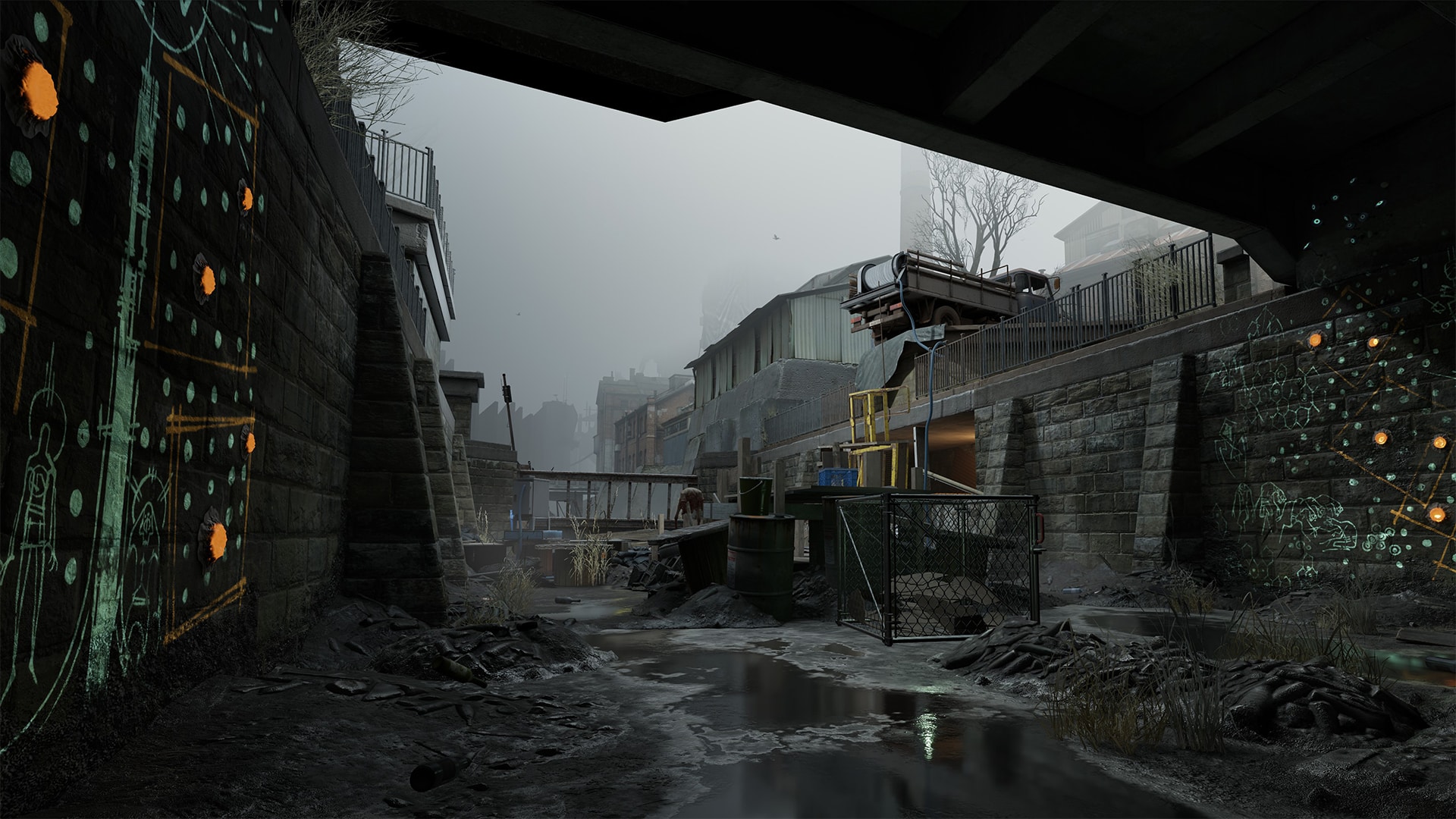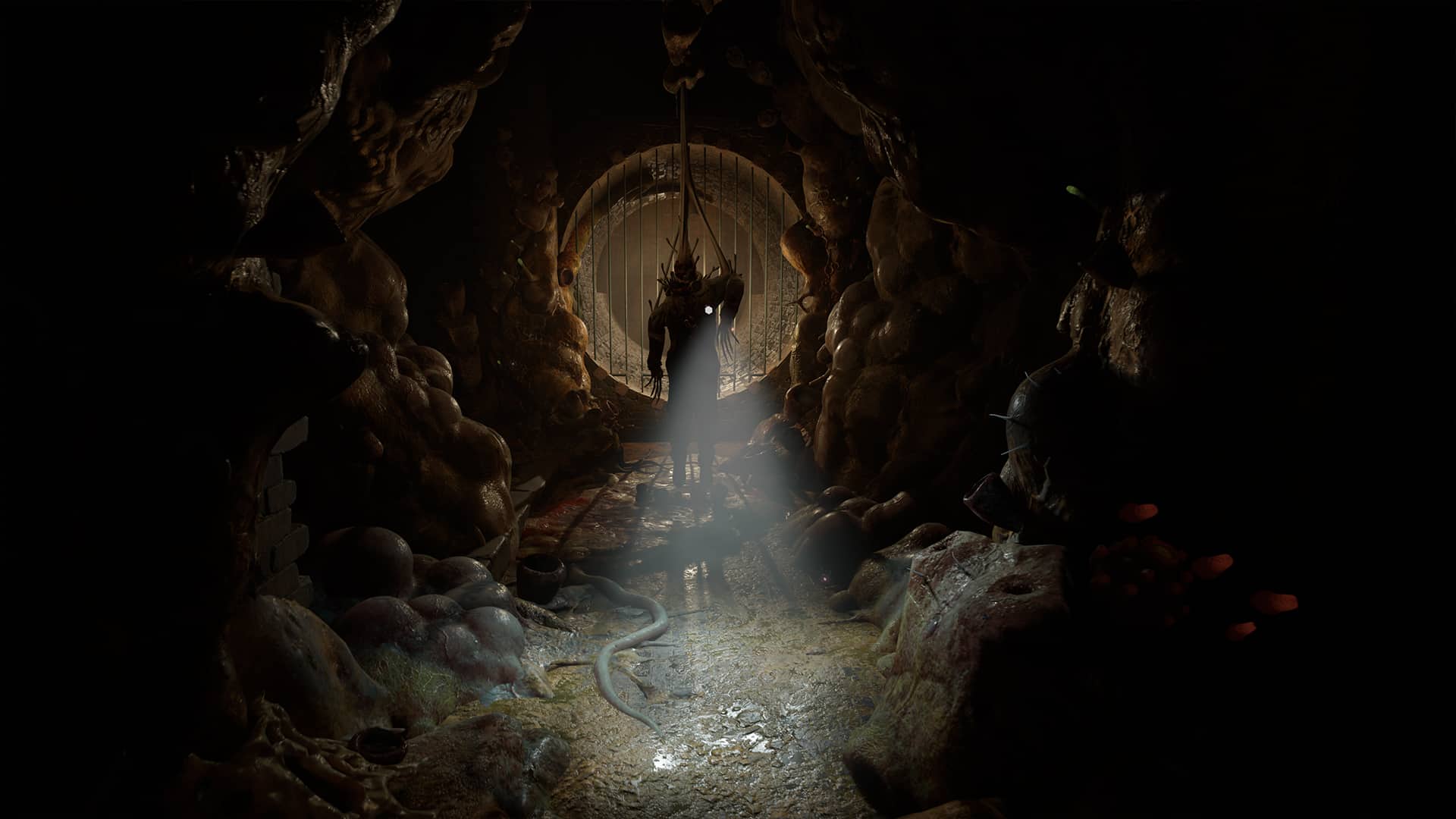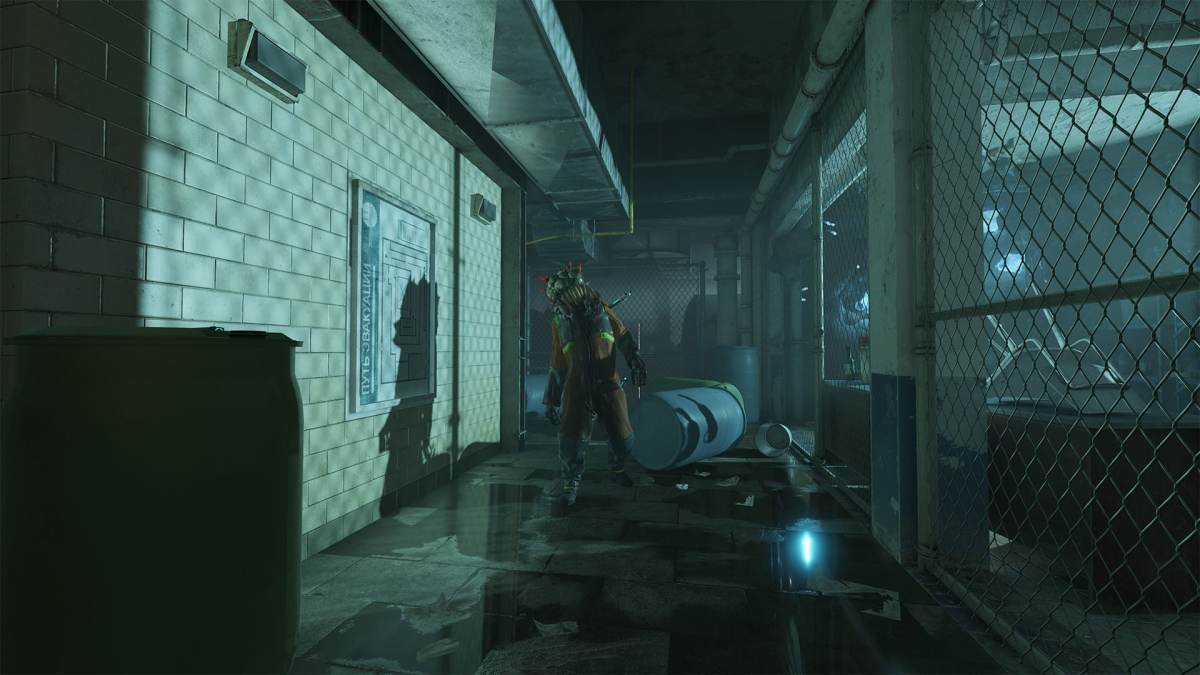There’s a moment in the first stage of Valve‘s Half-Life: Alyx where you see a magazine of ammunition sticking out of a corpse’s pocket. It’s a small little detail that’s similar to the kind of level design you’d see in any other game: a minor combination of gameplay rewards and the environment that helps the game’s world seem more like a real place.
There’s something different about Half-Life: Alyx, though. In Alyx, you can reach out your hand, grab the corpse, physically turn it around, toss it aside, or use it as a kind of rotting flesh puppet for your vaudeville act. If you do any of those things, you’ll notice something: There’s ammo in his other pocket, too.
The Valve developers wanted you to do that. They want you to spend every moment of your playthrough checking in cabinets, looking under furniture, moving boxes, emptying buckets, and messing with anything and everything in the rooms you fight your way through.
“I’ve always liked working on games where there was a bunch of specific props that told parts of the story. Basic meat-and-potatoes environmental storytelling stuff,” said developer Sean Vanaman. “To be able to do something now, where the art is … so high-fidelity, and players get to pick up things and pull them apart with their actual hands — it’s pretty great. And it means that everyone on the team gets to inject story into the game in their own way.”
Of course, Alyx can still be a pulse-pounding, high-octane VR action experience too; it’s up to players to set their own pace. However, Valve’s goal first and foremost was to capitalize on Half-Life’s strengths and translate them to VR.

“There’s a lot of mechanics that work really, really well in VR,” said level designer Corey Peters. “A lot of the things that make Half-Life work, such as exploration, puzzle-solving, pacing, combat, and storytelling — they just fit really well with the VR experience.”
There was of course an emphasis on physicality during development — that’s what VR is all about, after all. But the team’s main concern was just to ease people into understanding how to play a first-person shooter (FPS) in VR.
“If you haven’t played any VR games before, a lot of the types of movement and actions that you’re going to be doing require a bunch of training and a bunch of learning, because you’re learning a bunch of new skills that you’ve never had to deal with before,” said Peters. “Even the act of moving around the environment is a little bit different, whether you choose to use teleport or you choose continuous motion.”
The depth of the searching, the scavenger hunting, and the messing with the environment that the game rewards you for evolved over time. In the early stages of creating Half-Life: Alyx, when only the basic mechanics and corridors were present, playtesters treated the game much like you’d expect them to treat any FPS.
“When we started building a lot of levels in the game, they didn’t have art in them, and people would move through them pretty quickly, much like you would expect a player to in a traditional shooter,” said Peters. “You’d just kind of zip through the rooms, kill this guy, move to the next room, kill this guy, find a thing — that type of experience.”
Nobody was stopping to smell the roses. But it turned out that the only reason for that was that there weren’t any roses to smell. The moment that the developers started adding even slight set dressing, the players started to get obsessed.

“You would add a table with a box on it. In any other shooter, you’d just scream through that room and keep moving on to the next reward,” said Peters. “In here, people would walk over to that table. They would flip the box over, they’d look under the table — they’d try to just search every single corner looking for things.”
Mundane objects in a traditional FPS became objects of fascination in VR. As the developers noticed their playtesters focusing so intently on the world around them, they realized that the best course of action was to reward their natural curiosity — make it so the choices they felt compelled to make were validated.
“You might add a vent system along the ceiling, and there’d be a hole in it — you know, as you do in a Half-Life game,” said Peters. “Players before wouldn’t think anything of it, but now, players would stick their head up in there and look around. We would watch playtest after playtest of players doing this action. It ended up being like, ‘Oh, okay, let’s put something in that vent for them to find, because everybody wants to go over there and explore it.’”
It’s an emphasis on the environment that seems obvious in retrospect — the whole selling point of VR is that it takes away one more barrier between the player and the game world. It fits well with the rest of the game design too, which also emphasizes the physical. You have to tear away planks of wood with your bare hands, manually reload a gun with individual magazines, and open crates by picking them up and smashing them into the ground. When you upgrade a gun in the game, you have to physically insert the material used for the upgrade into the machine and then insert the gun, and only then can you choose what upgrades you want — by using your hand to press buttons on a virtual touchscreen.
“Any time you can use both of your hands and have some physical or mechanical skill to build, or interaction to do, it makes it really interesting,” said Peters. “We’ve always found that playtesters have really enjoyed that.”
The physicality even worked its way into how the story of Half-Life: Alyx is told. Vanaman, who previously worked on the narratively-focused Firewatch, drew on some lessons that he learned about what people loved best about that game — namely, the times when the immediate actions of the player affected the way the story was told.
“There’s a couple moments in (Firewatch) where you pick something up and then Henry would say, ‘I have it,’ and then you’d put it down and he’d say, ‘I’m not holding it anymore,’ and you’d pick it back up and he’d say, ‘I’m holding it again,’” said Vanaman. “He’d have a conversation with Delilah that would react in time with that. That always came back as a high in that game. There was a part of me, in the back of my brain, that thought ‘VR is just that to the max.’ Players are just continually doing stuff. Continually looking at things. Continually picking things up in way higher bandwidth than they are in a traditional TV game. So if we can leverage that character in your ear to be aware of what you’re doing and what you’re seeing, that could be really delightful.”
If VR one day makes it mainstream, people may one day be no more impressed by the physicality of Half-Life: Alyx than they are with the detailed visuals of the original Myst, the cinematic storytelling of Final Fantasy VII, or even the realistic physics of Half-Life 2. If that ends up being the case, and the sort of world set forth in Half-Life: Alyx is seen as old hat, that will mean the game has succeeded at something monumental — it will have not only set a standard by which all other VR games are judged, but it will have also standardized the way that future developers choose to approach VR game design.
But really, that’s just par for the course when it comes to Half-Life.






Published: Mar 26, 2020 03:13 pm